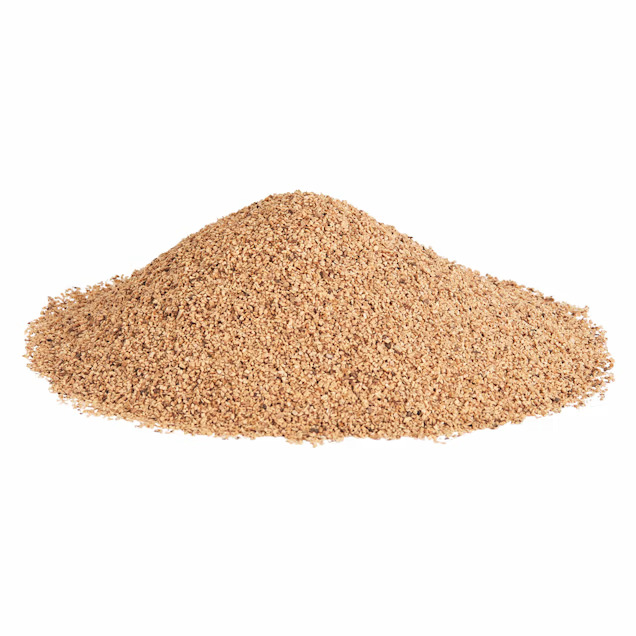Industrial uses of walnut shells
Contents |
[edit] What is walnut shell?
Walnut shells are the hard outer covering of walnuts. They are composed of cellulose, lignin, and hemicellulose, giving them a hard and durable nature. These shells are ground into various sizes, ranging from coarse granules to fine powders, depending on their intended use.
[edit] Properties of walnut shell
Walnut shells possess several unique properties that make them suitable for use in drilling fluid mud:
- Hardness: They are hard and durable, capable of withstanding high pressures and abrasive conditions.
- Biodegradability: Being a natural product, walnut shells are biodegradable and environmentally friendly.
- Chemical Resistance: Walnut shells are resistant to chemical breakdown, maintaining their structure in various chemical environments.
- Low Specific Gravity: They have a low specific gravity, which helps in maintaining the density of drilling fluids without significantly increasing the overall weight.
- Non-Toxic: Walnut shells are non-toxic, making them safe for use in various drilling operations.
[edit] Uses of walnut shell in drilling fluid mud
The drilling industry constantly seeks innovative and efficient materials to enhance the performance of drilling fluids. Walnut shells have emerged as a valuable additive in drilling fluid mud, offering numerous benefits. This blog will delve into the characteristics, uses, applications, advantages, disadvantages, and future prospects of walnut shell in drilling fluid mud. Additionally, we will highlight Peak Universal Business as a top supplier of high-quality walnut shells.
Walnut shells are used in drilling fluid mud primarily as a lost circulation material (LCM) and a bridging agent. Let's explore these applications in detail:
[edit] 1. Lost Circulation Material (LCM)
Lost circulation is a common problem in drilling operations where the drilling fluid is lost into the formation through fractures or highly permeable zones. Walnut shells are added to drilling fluid mud to mitigate this issue. They act as a plugging agent, filling the voids and fractures, thus preventing further fluid loss.
- Effective Plugging: Walnut shells effectively plug the fractures and voids, minimising fluid loss.
- Cost-Effective: Using walnut shells as an LCM is cost-effective compared to other synthetic materials.
- Environmentally Friendly: Being a natural product, walnut shells pose no environmental hazards.
[edit] 2. Bridging Agent
Walnut shells are also used as a bridging agent in drilling fluid mud. Bridging agents are materials added to drilling fluids to form a filter cake on the well bore walls, preventing the fluid from invading the formation. This helps in maintaining well bore stability and preventing formation damage.
- Formation of Filter Cake: Walnut shells help in forming an effective filter cake, reducing fluid invasion.
- Maintains Well bore Stability: By preventing fluid invasion, walnut shells help maintain well bore stability.
- Non-Damaging: Walnut shells are non-damaging to the formation, ensuring the integrity of the well bore.
[edit] Applications of Walnut Shell in Drilling Fluid Mud
Walnut shells are used in various drilling applications, including:
- Oil and Gas Drilling: Walnut shells are widely used in oil and gas drilling operations to control lost circulation and maintain well bore stability.
- Geothermal Drilling: In geothermal drilling, walnut shells help in preventing fluid loss into the formation, ensuring efficient drilling operations.
- Water Well Drilling: Walnut shells are also used in water well drilling to control lost circulation and improve drilling efficiency.
[edit] Advantages of Using Walnut Shell in Drilling Fluid Mud
- Eco-Friendly: Walnut shells are biodegradable and pose no environmental hazards, making them an eco-friendly choice for drilling operations.
- Cost-Effective: Compared to synthetic LCMs and bridging agents, walnut shells are cost-effective, reducing overall drilling costs.
- Efficient Plugging: Walnut shells effectively plug fractures and voids, minimising fluid loss and improving drilling efficiency.
- Non-Damaging: Being non-toxic and non-damaging, walnut shells preserve the integrity of the formation and well bore.
- Versatility: Walnut shells can be used in various drilling applications, from oil and gas to geothermal and water well drilling.
[edit] Disadvantages of Using Walnut Shell in Drilling Fluid Mud
- Limited Availability: The availability of walnut shells can be limited, especially in regions where walnuts are not commonly grown.
- Size Distribution: Achieving the desired size distribution of walnut shells can be challenging, affecting their performance as an LCM or bridging agent.
- Handling and Storage: Walnut shells require proper handling and storage to prevent contamination and degradation.
- Compatibility Issues: In some cases, walnut shells may not be compatible with certain drilling fluids, requiring additional testing and adjustments.
[edit] Future Prospects of Walnut Shell in Drilling Fluid Mud
The future of walnut shells in drilling fluid mud looks promising, with ongoing research and development aimed at enhancing their performance and expanding their applications. Key trends and prospects include:
- Enhanced Processing Techniques: Advances in processing techniques will enable the production of walnut shells with more consistent size distribution and improved performance.
- Sustainable Sourcing: Efforts are being made to ensure the sustainable sourcing of walnut shells, promoting environmentally friendly drilling practices.
- New Applications: Research is exploring new applications of walnut shells in drilling fluids, such as their use in high-temperature and high-pressure drilling environments.
- Improved Compatibility: Ongoing research aims to improve the compatibility of walnut shells with various drilling fluids, ensuring their effective use in diverse drilling operations.
[edit] Related articles on Designing Buildings
Featured articles and news
One of the most impressive Victorian architects. Book review.
RTPI leader to become new CIOB Chief Executive Officer
Dr Victoria Hills MRTPI, FICE to take over after Caroline Gumble’s departure.
Social and affordable housing, a long term plan for delivery
The “Delivering a Decade of Renewal for Social and Affordable Housing” strategy sets out future path.
A change to adoptive architecture
Effects of global weather warming on architectural detailing, material choice and human interaction.
The proposed publicly owned and backed subsidiary of Homes England, to facilitate new homes.
How big is the problem and what can we do to mitigate the effects?
Overheating guidance and tools for building designers
A number of cool guides to help with the heat.
The UK's Modern Industrial Strategy: A 10 year plan
Previous consultation criticism, current key elements and general support with some persisting reservations.
Building Safety Regulator reforms
New roles, new staff and a new fast track service pave the way for a single construction regulator.
Architectural Technologist CPDs and Communications
CIAT CPD… and how you can do it!
Cooling centres and cool spaces
Managing extreme heat in cities by directing the public to places for heat stress relief and water sources.
Winter gardens: A brief history and warm variations
Extending the season with glass in different forms and terms.
Restoring Great Yarmouth's Winter Gardens
Transforming one of the least sustainable constructions imaginable.
Construction Skills Mission Board launch sector drive
Newly formed government and industry collaboration set strategy for recruiting an additional 100,000 construction workers a year.
New Architects Code comes into effect in September 2025
ARB Architects Code of Conduct and Practice available with ongoing consultation regarding guidance.
Welsh Skills Body (Medr) launches ambitious plan
The new skills body brings together funding and regulation of tertiary education and research for the devolved nation.
Paul Gandy FCIOB announced as next CIOB President
Former Tilbury Douglas CEO takes helm.
























